When you pick up a plush toy—whether it’s a childhood teddy bear, a trendy collectible, or a custom mascot—have you ever wondered how long it will actually last? Plush toys carry more than just stuffing; they carry memories, comfort, and, sometimes, significant value. The truth is, not all plush are created equal. Some last a lifetime, while others start to wear out after just a few years. So, what really determines how long a plush toy will stay soft, safe, and lovable?
The average plush toy lasts anywhere from 5 to 20 years, depending on material quality, craftsmanship, care, and usage. Plush made with premium fabrics and handled gently can last a lifetime, while rough play and poor maintenance reduce longevity.
For many, a beloved plush becomes part of the family—passed from generation to generation, or even kept as a display piece. But what happens when plush toys outlive their softness, or their seams begin to fray? In this guide, we’ll break down the science, the secrets, and the practical steps you can take to maximize the lifespan of any plush. Plus, discover why choosing a quality manufacturer matters more than ever.
1. Quels sont les facteurs qui influencent la durée de vie d'une peluche ?
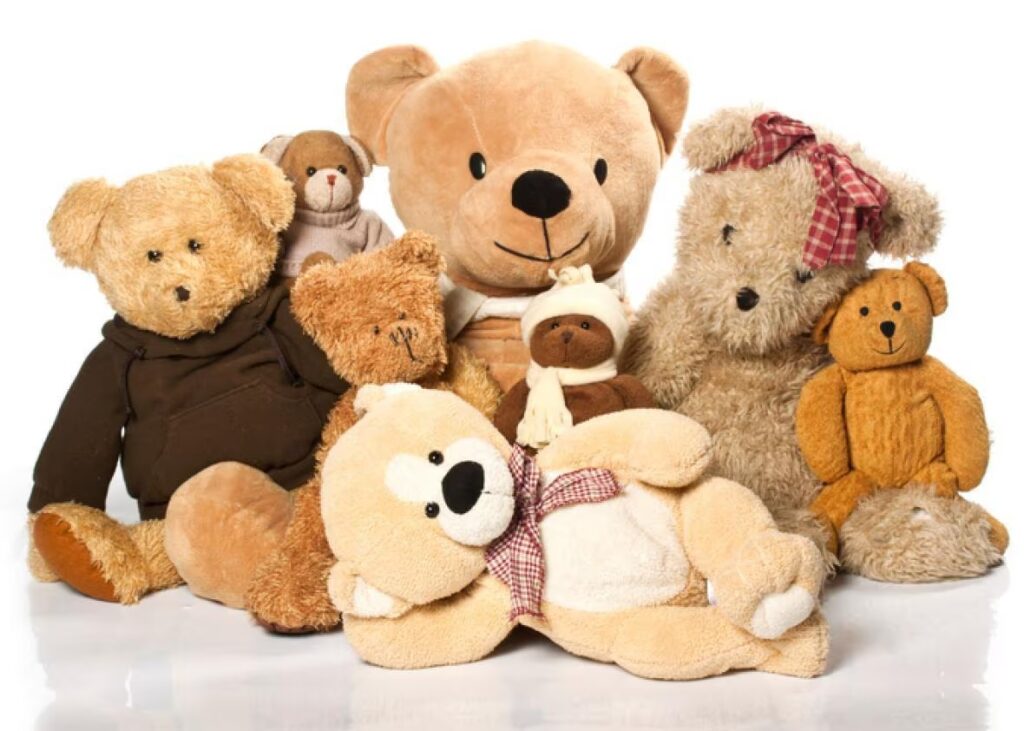
The lifespan of a plush toy depends on its material quality, craftsmanship, how often it’s used, the way it’s stored, and how well it’s cleaned.
The Main Drivers of Plush Longevity
- Material Quality:
Plush made from durable, high-density fibers lasts longer than those made from cheaper materials. For instance, high-grade polyester outlasts budget synthetics or fragile cotton blends. - Craftsmanship:
Strong stitching, double-seamed joints, and attention to detail all contribute to a plush toy that withstands years of cuddling and play. - Usage Patterns:
Toys that are frequently hugged, washed, or dragged outdoors are prone to faster wear and tear than display-only plushies. - Storage Environment:
Exposure to sunlight, humidity, or pests can significantly reduce plush life. - Cleaning and Maintenance:
Gentle cleaning, spot treatment, and following care instructions extend plush lifespan dramatically.
Example:
A plush bear made from premium polyester and stored on a shelf can easily look new after 15 years, while a favorite bedtime companion might show signs of love within 2-3 years.
Factors That Affect Plush Longevity
| Facteur | Impact sur la durée de vie | Typical Effect |
|---|---|---|
| Qualité des matériaux | High-quality = longer life | +5-15 years |
| Artisanat | Strong seams = more durable | +3-10 years |
| Utilisation | Heavy play = more wear | -5 years |
| Stockage | Sun/humidity = damage | -3 years |
| Maintenance | Gentle cleaning = protection | +2-5 years |
2. Which Materials Make Plush Toys More Durable?
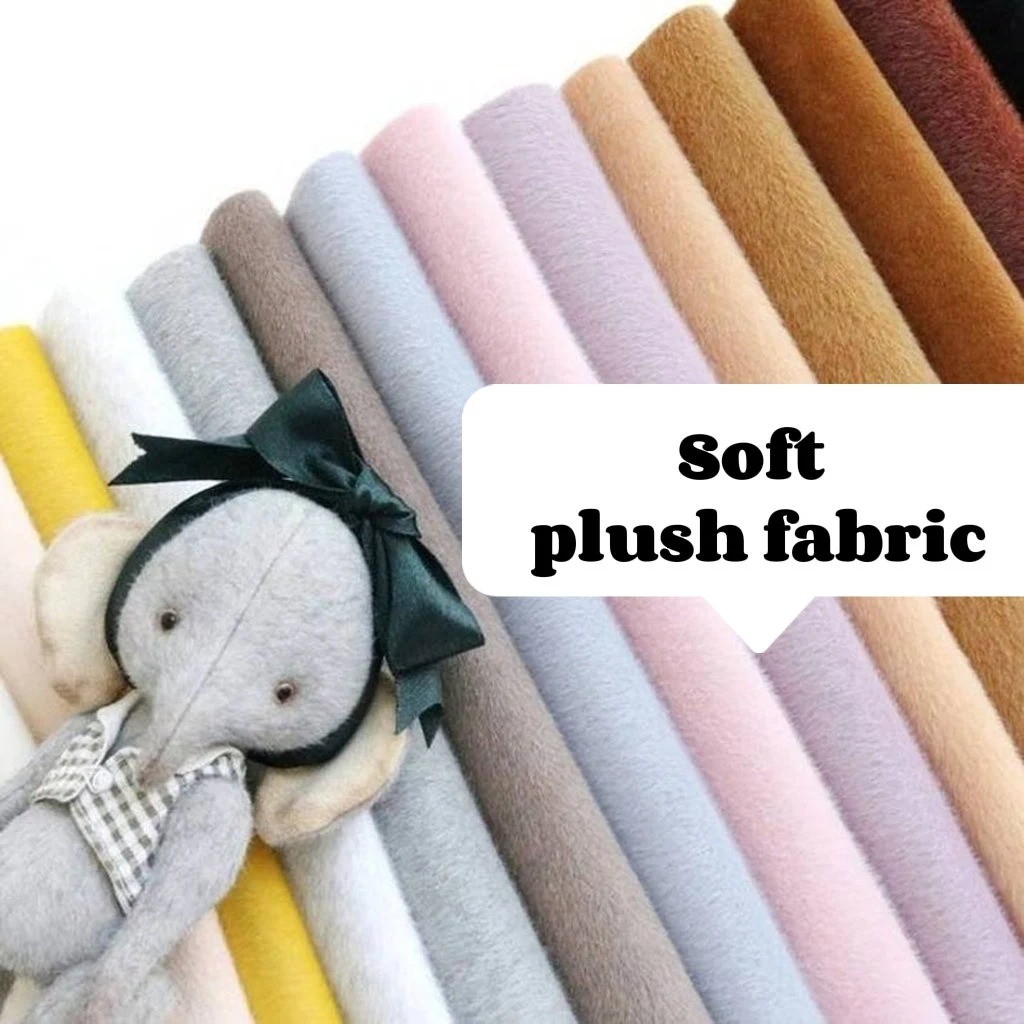
Plush toys made from high-quality polyester, microfiber, or blended fabrics are more durable and last longer than those made from low-grade cotton or novelty fabrics.
Comparing Plush Toy Materials
- Polyester:
The most popular and durable choice. It resists pilling, holds color well, and can handle frequent cleaning. Many premium plush manufacturers use polyester blends for maximum softness and strength. - Cotton:
Soft and natural but tends to wear out or lose shape faster, especially if exposed to moisture or rough handling. - Eco-Friendly Materials:
Recycled polyester and organic cotton are gaining popularity. These materials can be quite durable if processed well, but often require gentler care. - Luxury Fibers:
Mohair, alpaca, or specialty faux fur offer a unique feel but need careful maintenance to prevent matting and wear.
Example:
A plush bunny made from high-pile polyester can last a decade with proper care, whereas a novelty plush with felt accents might start fraying in a couple of years.
Plush Materials vs. Durability
| Type de matériau | Durabilité | Care Difficulty | Typical Lifespan |
|---|---|---|---|
| High-quality Polyester | Très élevé | Facile | 10-20+ years |
| Microfiber | Haut | Modéré | 8-15 years |
| Coton biologique | Moyen | Modéré | 5-10 years |
| Polyester recyclé | Haut | Facile | 8-15 years |
| Mohair/Alpaca | Moyenne-élevée | Challenging | 10+ years (with care) |
| Cheap Synthetics | Faible | Facile | 2-5 years |
3. How Do Usage and Care Habits Influence Plush Longevity?

Gentle use, regular maintenance, and proper storage can extend a plush toy’s lifespan, while rough play and neglect quickly lead to wear and tear.
Key Usage and Care Considerations
- Play Frequency:
Plush toys that are constant companions will wear out faster than those displayed on a shelf. - Cleaning Methods:
Hand washing with mild detergent and air drying preserves fibers better than harsh machine washing. - Storage:
Keeping plush toys away from sunlight, moisture, and pets reduces fading, mildew, and accidental damage. - Repairs:
Promptly mending small tears or re-stuffing saggy areas prevents bigger problems down the line.
Example:
A plush fox gently hand-washed and stored in a cotton bag can look new for over a decade, while the same toy tossed into a dryer or left in the sun may lose its softness and shape within a year.
Care Habits and Expected Plush Lifespan
| Care Habit | Effect on Lifespan | Maintenance Level |
|---|---|---|
| Gentle Hand Washing | Extends 3-5 years | Modéré |
| Machine Washing/Drying | Shortens 2-4 years | Faible |
| Séchage à l'air | Extends 1-3 years | Modéré |
| Frequent Repairs | Extends 2-5 years | Haut |
| Poor Storage | Shortens 2-4 years | Faible |
4. Do Plush Toys Expire or Have a Recommended Replacement Period?
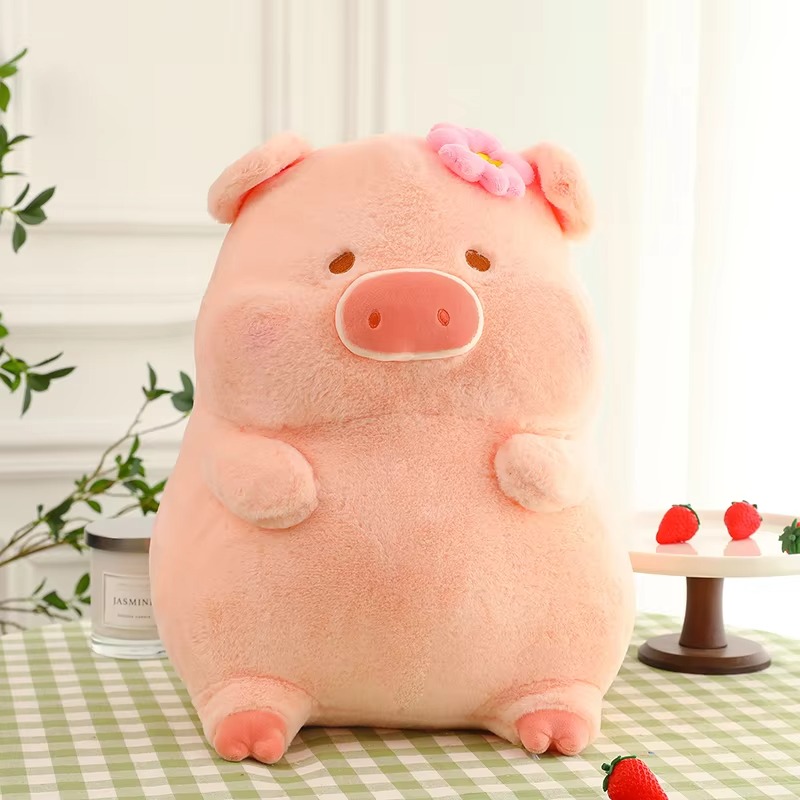
Plush toys don’t have a strict expiration date, but it’s best to replace them if they show signs of damage, loss of shape, or pose safety or hygiene risks.
Replacement Considerations
- Safety Standards:
Over time, safety features like eyes, noses, or seams can loosen and pose choking hazards, especially for young children. - Hygiene:
Accumulated dust, mites, or stains that cannot be cleaned may make a plush toy unsanitary. - Age Guidelines:
Health experts often recommend replacing plush toys every 2-3 years for infants, but older children and adults can keep plush longer with proper care. - Sentimental Value:
Many adults keep plush for decades, especially if they are heirlooms or collectibles, but they may not be suitable for children after a certain age.
Example:
A well-loved plush bear used by a toddler may need replacing after three years, while a collectible plush kept in a display case can last a lifetime.
When to Replace Plush Toys
| Condition | Recommended Action | Raison |
|---|---|---|
| Torn Seams/Loose Parts | Replace or repair | Safety concern |
| Persistent Odors | Replace | Hygiene issue |
| Stains that won’t wash out | Replace | Hygiene/appearance |
| Outgrown by child | Store or donate | Safety/hygiene |
| Collectible plush | Maintain/restore | Sentimental value |
5. Is It Safe to Keep Old Plush Toys for Sentimental or Decorative Purposes
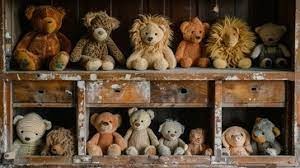
It’s generally safe to keep old plush toys for sentimental or decorative use, as long as they’re clean and free from allergens, pests, or hazardous parts.
Health and Safety Considerations
- Allergen Build-Up:
Plush toys can trap dust mites and allergens. Regular cleaning is a must for long-term storage. - Pest Risks:
Store plush toys in sealed containers to prevent moths or insects from damaging the fabric. - Material Degradation:
Natural fibers may break down over decades, making them more fragile or prone to tearing. - Restoration:
Professional cleaning or restoration services can revitalize heirloom plush for display.
Example:
A plush animal inherited from a grandparent can be safely displayed after a thorough cleaning and minor repairs, but shouldn’t be given to babies due to potential allergens.
Storing Old Plush Safely
| Méthode de stockage | Suitability | Risks Prevented |
|---|---|---|
| Sealed Container | Haut | Moths, dust, pests |
| Open Shelf | Moyen | Dust, sunlight |
| Cotton Bag | Haut | Moisture, dust |
| Vacuum Bag | Haut | Allergen buildup |
6. Are There Signs That a Plush Toy Needs Repair or Replacement?
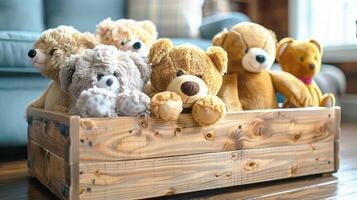
Yes—plush toys need repair or replacement if they have worn fabric, loose seams, missing stuffing, persistent odors, or become unsafe for their intended user.
Spotting the Warning Signs
- Worn or Bald Patches:
Indicate fabric fatigue; may be repairable with patches or re-furring. - Loose Seams:
Can usually be sewn up, but extensive seam damage may warrant replacement. - Problèmes de bourrage :
Lumpy or missing stuffing affects shape and comfort; re-stuffing is an option. - Stains and Odors:
If cleaning doesn’t resolve the issue, replacement may be the safest choice. - Loose Eyes or Noses:
A choking hazard for children—repair or replace immediately.
Example:
A plush giraffe missing an eye and with stuffing poking out should be fixed right away or retired from play use.
Signs and Solutions for Plush Toy Issues
| Enjeu | Repairable? | Solution |
|---|---|---|
| Bald Patches | Oui | Patch or re-fur |
| Loose Seams | Oui | Sew up |
| Missing Stuffing | Oui | Re-stuff |
| Persistent Odor | Sometimes | Deep clean/replace |
| Loose Eyes/Parts | Sometimes | Re-attach/replace |
7. How Can Collectors and Brands Preserve Plush Toys for Maximum Lifespan?
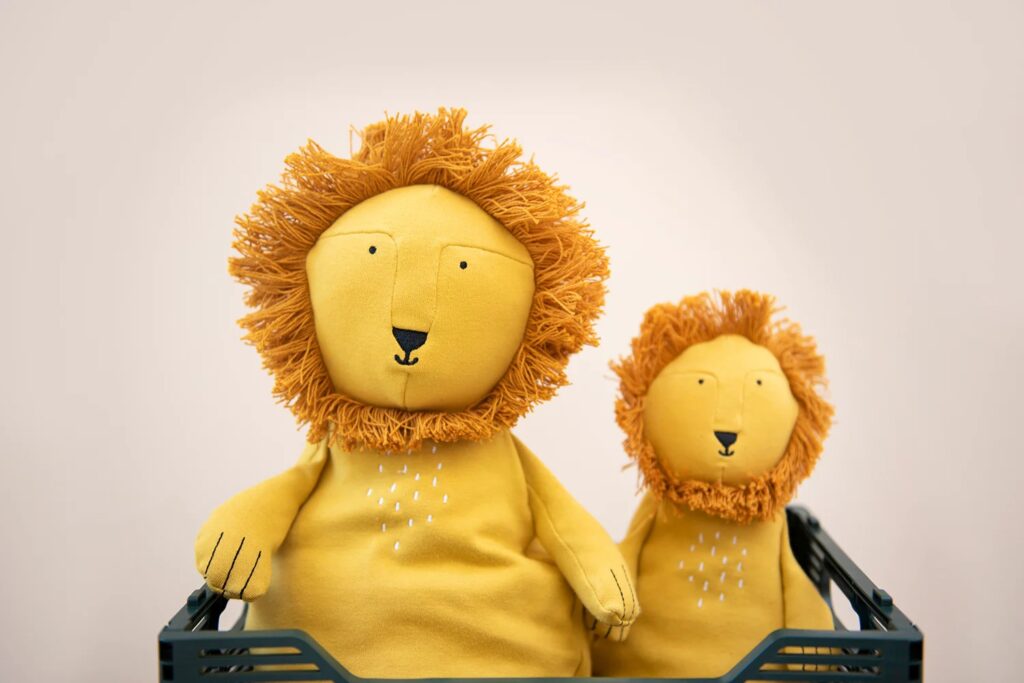
Collectors and brands can extend plush life through climate-controlled storage, careful cleaning, and avoiding direct handling or sunlight.
Professional Preservation Tips
- Climate Control:
Store plush at stable temperatures and low humidity to prevent mold or mildew. - Acid-Free Materials:
Use acid-free tissue paper and boxes for long-term storage. - Minimal Handling:
Wearing gloves and limiting physical contact reduces oil and dirt transfer. - Display Cases:
Clear acrylic cases protect against dust and UV rays while showcasing collectibles. - Documentation:
Keep records of origin, material, and care for valuable or limited-edition plushies.
Example:
Museums and serious collectors keep rare plush toys in sealed, climate-controlled cases, ensuring they look perfect even after 50 years.
Plush Preservation Checklist for Collectors
| Étape | Pourquoi c'est important | How Often |
|---|---|---|
| Climate control | Prevents mold/mildew | Toujours |
| Acid-free packaging | Avoids material degradation | For long-term storage |
| Limit handling | Reduces dirt/wear | Selon les besoins |
| Use display cases | Prevents dust/UV exposure | Toujours |
| Clean gently | Maintains appearance | Annually or as needed |
The true lifespan of a plush toy comes down to a mix of quality, care, and love. Choose plush toys made with premium materials and expert craftsmanship, and they’ll reward you with years—even decades—of comfort, joy, and beauty. With proper care, plush can become lifelong companions or timeless collectibles.
Ready to create plush that lasts?
Whether you’re a retailer, brand, or passionate collector, Kinwin is your expert partner for premium plush design, manufacturing, and custom solutions. Our commitment to sustainable materials, advanced production, and strict quality control means every plush we produce is built for longevity.
Contact Kinwin today for custom plush production, B2B collaboration, or to learn more about our plush solutions. Let’s craft something memorable—together.




